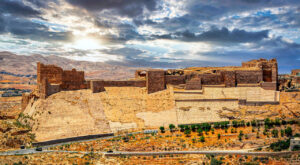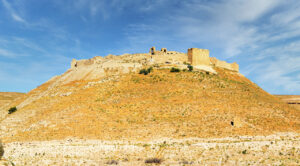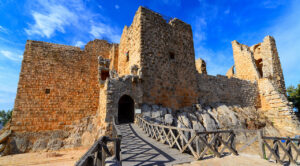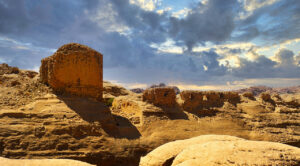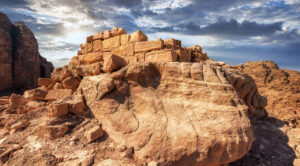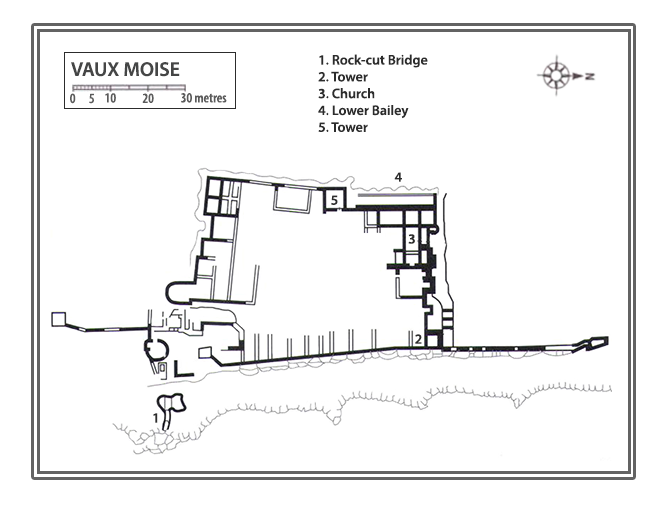Vaux Moise (Al Wu’eira) is a fascinating relic of the Crusader era, perched in the dramatic landscape just outside the ancient city of Petra. Founded in 1116 by Baldwin I of Jerusalem, this small but strategic fortress served as an outpost for the larger Crusader stronghold of Shobak (Montreal), controlling vital trade and communication routes between Cairo and Damascus. Its secluded location on a precarious ridge and ingenious defences make it a wonder of medieval military architecture.
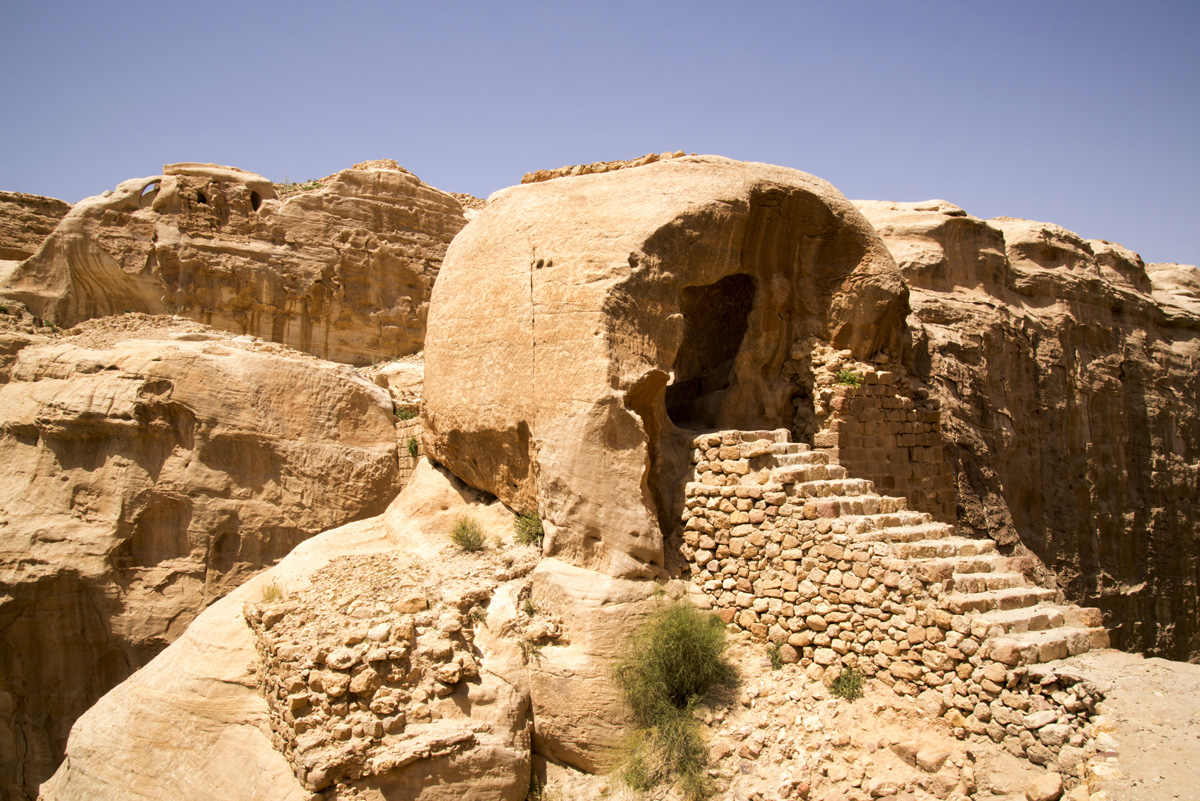
The castle’s position is as striking as it is strategic. Nestled on a narrow ridge with steep, smooth-sided cliffs flanking it, the Crusaders chose this site to maximise natural defences. They enhanced the landscape further by smoothing the rocks around the fortress, ensuring attackers couldn’t gain any footholds. The only way in is via a single narrow bridge, towering over the surrounding terrain and completely dominated by the castle walls. At the entrance, you’ll find one of the most impressive features—a gatehouse carved directly into the red sandstone. This architectural marvel, reminiscent of Petra’s famed rock-cut buildings, includes benches lining the interior, beautifully blending function with tradition.
The fortifications cling to the precipices, a double line of defence protecting the eastern core of the fortress. The curtain walls are composed of small, squared, and neatly coursed stones, enclosing a rectangular area of approximately 100 x 35 metres. Inside, the remnants of chambers along the walls give a glimpse into the life of its occupants.
The fortress’s few towers, square in structure, are pierced with narrow arrow slits. Of these, the central tower on the southern wall stands out as a potential donjon, anchoring the military defences.
Within the complex lies a fortified church, accessible via a ramp from the southern side. This area also contains a burial site and cross-defensive features, strategically placed near the main water tank of the fortress. Outside the main structure, remnants of watchtowers perch on isolated rock outcrops, connected to the centre through a network of rock-carved paths and stairs. These additions provided advanced visibility over the surrounding valley, further reinforcing the castle’s military effectiveness.
Though not architecturally grand, the sheer ingenuity of Vaux Moise’s design and construction is awe-inspiring within its rugged and remote setting. The castle was far more than a defensive outpost. It was a testament to the Crusaders’ ability to adapt to the harsh landscapes and leverage them to their advantage, ensuring effective military operations despite the wilderness all around.
For contemporary visitors, Vaux Moise offers a compelling connection to history. Located just 1.5 km from the Petra Visitor Centre, the site is accessible but remains something of a hidden gem due to the lack of signage. Relying on GPS or Google Maps is highly recommended to find this remarkable piece of Crusader history. While the ruins are weathered by time, the sense of place and the echoes of its past make a visit to Vaux Moise both evocative and unforgettable.
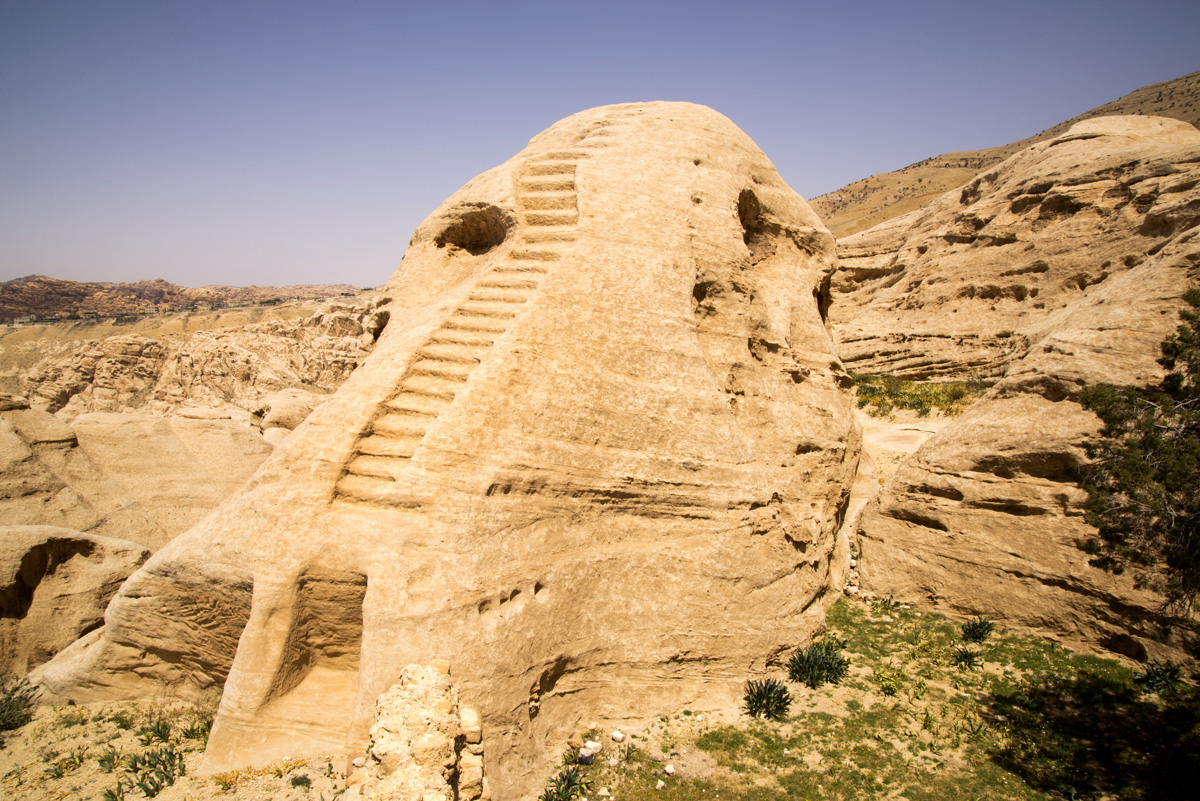
The fortress of Wadi Musa, established in 1116 during the reign of King Baldwin I of Jerusalem, was built upon the remnants of a Nabataean or Roman structure and significantly expanded in 1142. This stronghold was one of the most enduring achievements of Baldwin I in the region of Oultrejourdain.
After falling to a surprise Turkish attack in 1144, the fortress was recaptured by the young Baldwin III using unconventional tactics. Despite its remote location, it remained under Crusader control, withstanding an Egyptian offensive in 1158. However, like other Crusader fortresses in Oultrejourdain, it was lost to Muslim forces following the defeat at the Battle of Hattin in 1188.
Under Ayyubid rule, Vaux Moise’s status diminished, and the site saw a shift towards domestic living and increased industrial activity, marking a new chapter in its storied history.
